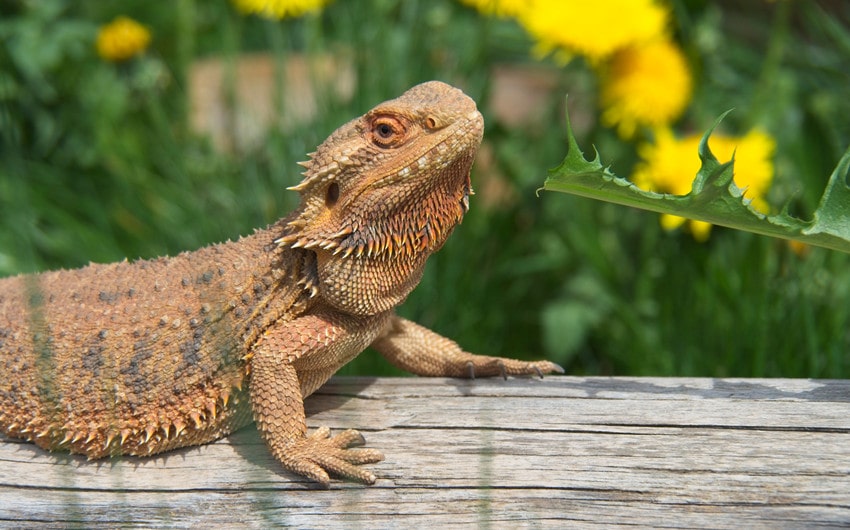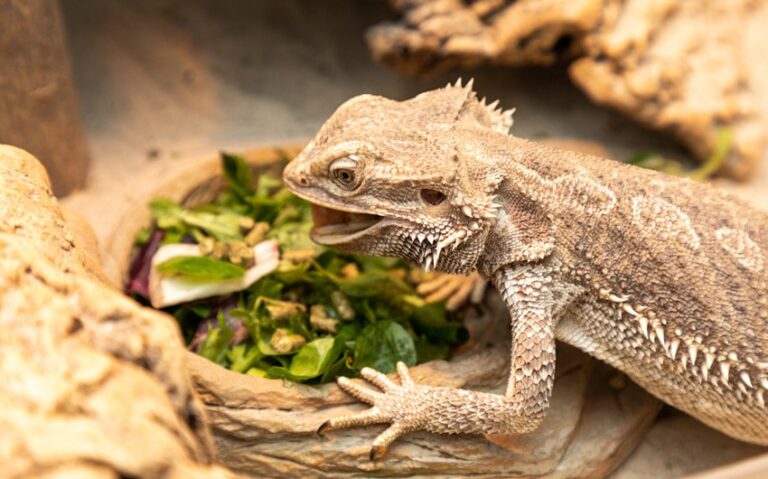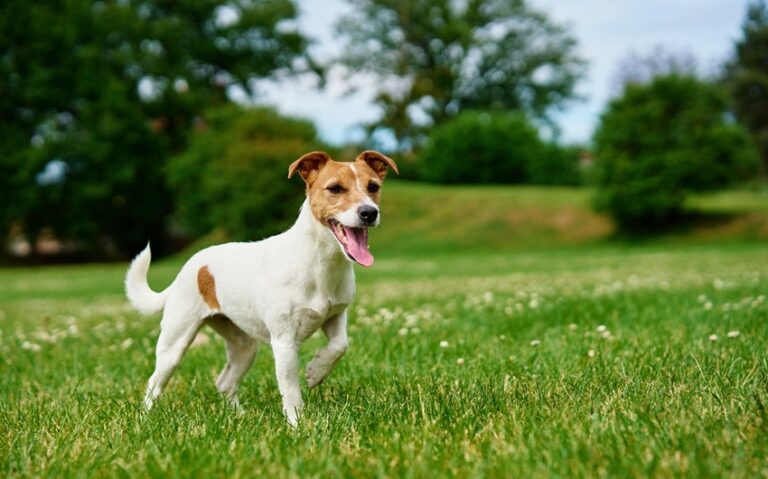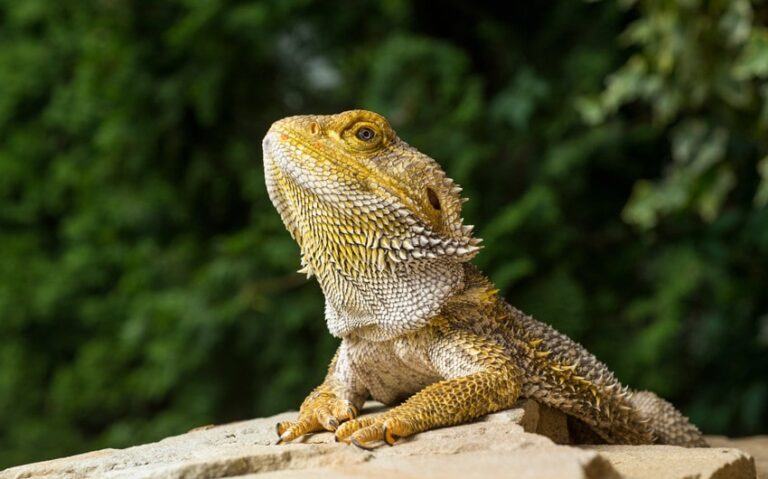Vegetables for Bearded Dragon Veggies: A Complete Guide
Caring for a bearded dragon involves more than just providing a cozy habitat—what you feed them is just as important. Vegetables play a crucial role in keeping your dragon healthy and active, giving them the nutrients they need to thrive.
But with so many choices, how do you know which are the best vegetables for bearded dragon? Whether you’re a new or experienced owner, understanding what’s safe and nutritious will help you create a balanced diet for your pet. In this guide, we’ll explore the top veggies that will keep your bearded dragon happy and healthy.
Best Vegetables for Bearded Dragons
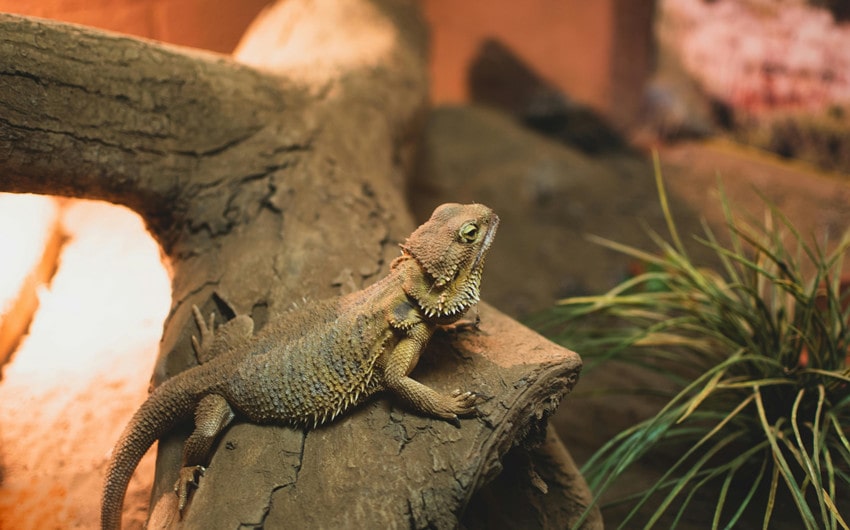
Choosing the right vegetables for your bearded dragon is essential for their health and well-being. Here’s a list of some of the best vegetables, along with their nutritional benefits and tips on how frequently they should be offered:
1. Collard Greens
Collard greens are one of the most important staple vegetables for bearded dragons. They are incredibly rich in calcium, which is vital for maintaining strong bones and preventing metabolic bone disease—a common condition in reptiles due to calcium deficiency.
Alongside calcium, collard greens contain vitamins A, C, and K, which support vision, immune function, and blood clotting. This leafy green is best served raw and chopped into small, bite-sized pieces. You can offer collard greens daily as the foundation of your bearded dragon’s vegetable mix.
2. Mustard Greens
Mustard greens are another powerhouse of nutrition for bearded dragons. They are particularly high in fiber, which aids digestion, and they contain significant amounts of calcium, making them excellent for bone health. Additionally, mustard greens are rich in vitamins A and K, supporting everything from good eyesight to strong immune function.
Mustard greens can have a peppery taste, but most dragons enjoy them. This vegetable is ideal for daily feeding, providing a staple green that can be combined with other veggies for variety.
3. Dandelion Greens
Dandelion greens, often overlooked by many, are one of the most nutritious vegetables you can offer your bearded dragon. They are packed with calcium, making them another great option for preventing bone issues. Additionally, dandelion greens contain vitamin C, which helps boost the immune system and fight off infections.
These greens are best served fresh and raw. Be sure to source dandelion greens that have not been exposed to pesticides if you’re picking them from your yard. Serve them a few times a week as part of a varied diet.
4. Turnip Greens
Turnip greens provide a wealth of benefits for your bearded dragon. They are an excellent source of calcium, essential for bone strength, and they also contain significant amounts of vitamins A and K. Vitamin A helps maintain healthy skin and vision, while vitamin K supports blood health.
These greens are typically mild in flavor, making them a favorite among bearded dragons. You can serve turnip greens raw and finely chopped, and they can be offered frequently, as they are highly nutritious and low in oxalates.
5. Endive
Endive is a crisp, leafy vegetable that adds variety to your dragon’s diet. It is high in fiber and contains a good amount of vitamins A and C, which are essential for immune health and good skin condition. Endive is hydrating and offers a refreshing crunch that many bearded dragons enjoy. Because of its mild flavor, it’s often a great addition to other leafy greens in salads. You can offer endive a few times a week, especially during warmer months when hydration is important.
6. Watercress
Watercress is a lesser-known but excellent addition to your bearded dragon’s vegetable selection. It is packed with calcium and vitamins A and C, supporting bone health, immune function, and good vision. Watercress has a slightly peppery taste but is highly nutritious, making it a great green to introduce into your dragon’s diet. Be sure to wash it thoroughly and chop it into manageable pieces. It can be fed two to three times a week alongside other leafy greens.
7. Bell Peppers
Bell peppers, especially the red, yellow, and green varieties, are full of vitamins A and C, which support a healthy immune system and vision. Bell peppers also provide hydration, as they are made up of a high percentage of water. The vibrant colors make them visually appealing, and their mild sweetness is usually well received by bearded dragons.
However, due to their low calcium content and slightly higher sugar levels, they should be offered in moderation, about once or twice a week. Be sure to remove the seeds and cut them into small, easy-to-eat pieces.
8. Squash (Butternut, Acorn, Spaghetti)
Squash is an excellent vegetable to include in your bearded dragon’s diet due to its high water content and fiber, both of which aid digestion. Butternut, acorn, and spaghetti squash varieties are also rich in vitamins A and C, contributing to overall health and well-being.
These vegetables can be served raw or lightly steamed to soften them, and they can be a great way to add variety to your dragon’s diet. Squash is generally well-liked by dragons and can be offered a few times a week for added hydration and fiber.
9. Carrots
Carrots are a colorful, nutritious option that provides a high dose of vitamin A, which is essential for maintaining good eyesight and skin health. However, they also contain a relatively high amount of sugar, so it’s important to feed them in moderation.
You can serve carrots raw, grated, or thinly sliced, but avoid giving them too often—once a week is ideal. While carrots are a good source of beta-carotene, excessive amounts can lead to an imbalance in your dragon’s diet.
10. Zucchini
Zucchini is a low-calorie, hydrating vegetable that is perfect for adding variety to your bearded dragon’s diet. It is high in water content and provides small amounts of vitamins A and C. While zucchini is not as nutrient-dense as some other vegetables, its light flavor and texture make it a good occasional snack, especially in warmer weather.
You can serve zucchini raw and finely chopped or shredded. Offer zucchini a few times a week, especially when your dragon needs more hydration.
11. Cucumbers
Cucumbers are another hydrating vegetable that can be offered occasionally to keep your bearded dragon hydrated. While cucumbers are low in nutrients compared to other vegetables, their high water content makes them a good choice on hot days or when your dragon needs a little extra hydration.
Be sure to peel and chop cucumbers into small pieces before serving, and offer them sparingly, as they should not replace more nutrient-dense options. Once a week is ideal.
12. Sweet Potatoes
Sweet potatoes are rich in beta-carotene, which is converted into vitamin A and supports good skin and vision. They also contain some fiber, which aids in digestion. However, sweet potatoes are higher in carbohydrates and should be offered sparingly. You can serve sweet potatoes raw or lightly steamed and mashed. Offering them once a week is sufficient, as too much can lead to an imbalance in nutrients.
13. Green Beans
Green beans are a great option for adding variety to your bearded dragon’s diet. They are full of fiber, which helps with digestion, and contain vitamin C, which boosts immune health. Green beans can be served raw and chopped into small pieces to prevent choking. You can offer green beans once or twice a week as part of a mixed vegetable salad, giving your dragon a crunchy, nutritious treat.
14. Parsnips
Parsnips are packed with vitamins C and E, both of which are important for immune health and preventing cell damage. They also contain fiber, which supports healthy digestion. Parsnips can be served raw, shredded, or lightly cooked. They have a sweet taste and are often enjoyed by bearded dragons, but due to their carbohydrate content, they should be offered in moderation, about once a week.
15. Okra
Okra is a nutrient-dense vegetable that provides fiber, calcium, and vitamin C. It is great for supporting bone health and digestion. Okra can be served raw and chopped into small pieces to ensure your dragon can easily eat it. It’s best to offer okra a couple of times a week as part of a varied diet, as its nutritional profile can complement other vegetables.
Preparing Vegetables for Your Bearded Dragon
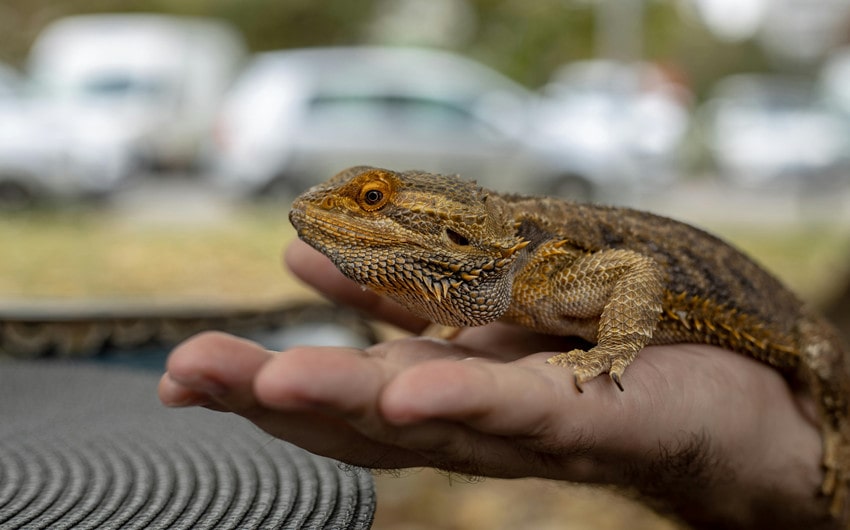
Proper preparation of vegetables is crucial to ensure your bearded dragon can eat them safely and digest them efficiently. Below are some key steps and tips for preparing veggies to ensure they are healthy, easy to eat, and enticing for your dragon.
1. Wash Vegetables Thoroughly
Before feeding any vegetables to your bearded dragon, it’s essential to wash them thoroughly to remove any dirt, pesticides, or harmful chemicals. Even organic vegetables should be rinsed under cold water to ensure they are clean and free of contaminants. Bearded dragons are sensitive to chemicals, and exposure to pesticides can lead to serious health issues, including poisoning.
2. Chop into Bite-Sized Pieces
Bearded dragons don’t chew their food as thoroughly as humans, so it’s important to chop or grate vegetables into small, bite-sized pieces. This makes it easier for your bearded dragon to grab and swallow the food without the risk of choking.
For leafy greens, you can tear or chop the leaves into small sections, and for harder vegetables like carrots or squash, use a grater or finely dice them. Ensuring that veggies are appropriately sized will also help with digestion and reduce the chance of impaction.
3. Serve Vegetables Raw or Lightly Steamed
Most vegetables should be served raw to retain their full nutritional value. Leafy greens and other soft veggies, like bell peppers and zucchini, are best when offered raw. However, for harder vegetables like sweet potatoes or squash, you can lightly steam them to soften their texture, making them easier for your bearded dragon to eat.
Avoid boiling vegetables, as this can leach out essential vitamins and minerals. If you choose to steam vegetables, allow them to cool to room temperature before serving.
4. Offer a Mix of Vegetables
Variety is key when it comes to feeding your bearded dragon. Mixing several different types of vegetables in a salad bowl will not only provide a more balanced diet but will also keep your dragon interested in its meals. Try combining leafy greens like collard and mustard greens with colorful options like bell peppers and carrots. Mixing textures and colors can encourage your dragon to eat more, as they are often attracted to brightly colored foods.
5. Avoid Seasoning or Cooking Oils
It’s important to remember that bearded dragons should never be fed vegetables that have been cooked with oils, spices, or seasonings. While this may seem obvious, it’s essential to ensure that veggies served to your pet are kept plain and unseasoned. Oils and seasonings can irritate their digestive system and lead to health problems, so always serve vegetables in their natural state.
6. Store Leftover Vegetables Properly
If you prepare more vegetables than your bearded dragon can eat in one sitting, be sure to store leftovers properly. Place the unused portion in an airtight container and refrigerate it. Vegetables can typically be stored for a few days, but always check for signs of spoilage (e.g., wilting or browning) before feeding them to your dragon. Avoid giving your bearded dragon old or spoiled vegetables, as this can cause digestive upset or bacterial infections.
7. Remove Uneaten Vegetables
If your bearded dragon doesn’t finish its meal, remove any uneaten vegetables from its enclosure after about an hour. Leaving uneaten vegetables in the tank for too long can attract bacteria or insects, which could lead to health issues. Additionally, vegetables left in the tank for too long may wilt or spoil, reducing their nutritional value and potentially causing digestive problems if consumed later.
Vegetable Portions and Frequency
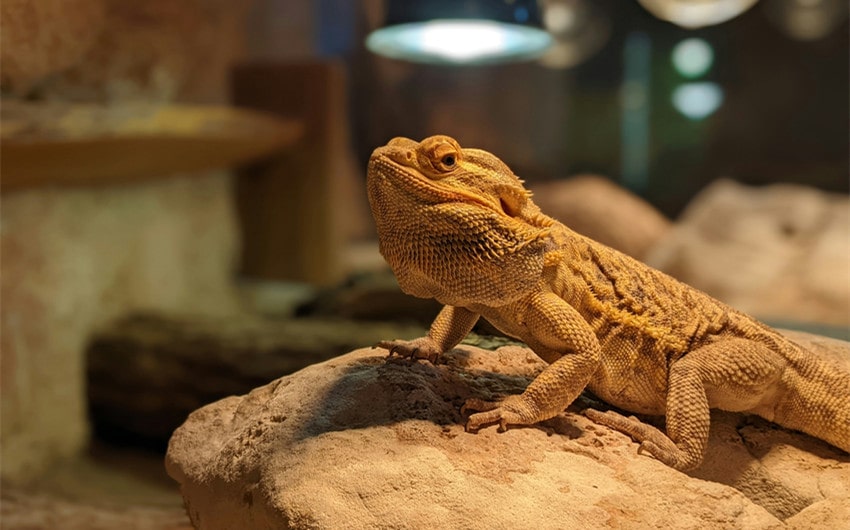
Knowing how much to feed your bearded dragon and how often to offer vegetables is key to maintaining a balanced diet. The appropriate portions and feeding frequency will depend on your bearded dragon’s age, size, and overall health. Below are some guidelines to help you determine the right portions and frequency for your pet.
1. Juveniles (Under 12 Months)
Juvenile bearded dragons are still growing, and during this stage of their life, they require more protein from insects than vegetables. However, it’s important to start introducing vegetables early to ensure they develop a taste for them as they grow older. For juveniles, vegetables should make up about 20-30% of their diet, with the remaining portion being protein from insects like crickets or dubia roaches.
You should offer vegetables once a day alongside their insects. The portion size should be small—a handful of chopped, bite-sized vegetables is sufficient. Leafy greens, such as collard greens or mustard greens, are great options to start with. Gradually increasing the variety of vegetables as they grow will help ensure they get accustomed to eating a balanced diet.
2. Adult Bearded Dragons (12 Months and Older)
As bearded dragons mature, their diet should shift to include more vegetables. For adults, vegetables should make up 70-80% of their daily diet, with the remaining portion being insects and occasional fruit. Vegetables should be offered daily, and the portion size can be larger compared to juveniles.
A good rule of thumb for portion sizes is to provide a bowl of vegetables that is roughly the same size as your bearded dragon’s body. You should aim to feed a variety of vegetables every day, including leafy greens, bell peppers, carrots, and squash. For adult bearded dragons, feeding insects two to three times a week is sufficient, as too much protein can lead to health issues such as obesity or kidney problems.
3. Senior Bearded Dragons (5 Years and Older)
Senior bearded dragons often have slower metabolisms and may require less food overall. However, they still need a balanced diet that is rich in vegetables to maintain their health. For senior dragons, vegetables should continue to make up the bulk of their diet, around 80-90%, with insects being offered only occasionally (once or twice a week).
Portion sizes may decrease as your dragon becomes less active, but the focus should remain on offering a variety of nutritious vegetables daily. Be sure to monitor your dragon’s weight and adjust feeding portions if necessary to prevent obesity.
4. Balancing Vegetables with Insects
Although vegetables are essential, it’s important to maintain the proper balance between vegetables and insects. For younger dragons, insects will play a larger role, but as they age, the focus should shift more toward plant-based foods. Keep in mind that adult bearded dragons require much less protein than juveniles, and overfeeding insects can lead to health problems, including obesity and gout.
You can establish a routine where you offer vegetables every day, and on certain days (such as twice a week for adults), supplement the vegetables with insects. Always remove uneaten insects after feeding to prevent them from nibbling on your dragon or contaminating the food.
5. Feeding Frequency for Special Occasions
If your bearded dragon is recovering from illness or needs extra hydration, you may want to adjust their diet temporarily. For example, increasing the amount of water-rich vegetables like cucumbers or zucchini can help with hydration during warmer months or after illness.
On the other hand, you can offer more calcium-rich greens like collard or dandelion greens to help with bone recovery if your dragon has experienced metabolic bone disease or other health issues.
6. Avoid Overfeeding
Overfeeding, even with vegetables, can lead to obesity and other health issues. Always monitor your dragon’s weight and body condition to ensure they are receiving the right amount of food. If you notice your dragon gaining too much weight, reduce portion sizes and avoid feeding high-carbohydrate vegetables, like sweet potatoes, too often.
Vegetables to Avoid
While many vegetables are safe and beneficial for bearded dragons, certain types should be avoided or fed in very limited quantities. These vegetables can either cause health issues, lack nutritional value, or interfere with calcium absorption, which is essential for your bearded dragon’s well-being. Below is a detailed list of vegetables that should be excluded from their regular diet, along with explanations of why they are problematic.
1. Spinach
Spinach is often considered a healthy vegetable for humans, but it can be harmful to bearded dragons. Spinach contains high levels of oxalates (oxalic acid), which bind to calcium and prevent its absorption. Since calcium is crucial for bearded dragons to maintain healthy bones and avoid metabolic bone disease (MBD), regularly feeding spinach can lead to calcium deficiencies.
While small amounts of spinach occasionally won’t cause immediate harm, it’s best to avoid it altogether to ensure proper calcium absorption from other foods.
2. Iceberg Lettuce
Iceberg lettuce is low in nutrients and consists mostly of water. While hydration is important, iceberg lettuce offers little to no nutritional value for bearded dragons. In fact, the high water content can cause digestive issues, including diarrhea, which can lead to dehydration—ironically defeating the purpose of feeding watery lettuce.
If you want to offer lettuce, opt for more nutrient-dense varieties like romaine or butter lettuce, though even these should be given sparingly. Iceberg lettuce, however, should be completely avoided.
3. Rhubarb
Rhubarb is toxic to bearded dragons and should never be fed. It contains high levels of oxalic acid, which, like spinach, binds to calcium and prevents it from being absorbed. However, rhubarb’s toxicity extends beyond calcium absorption; ingesting it can lead to severe poisoning and can even be fatal to bearded dragons.
Symptoms of rhubarb poisoning include lethargy, diarrhea, and vomiting. If your bearded dragon accidentally ingests rhubarb, seek veterinary care immediately. This vegetable should be avoided at all costs.
4. Beet Greens
Beet greens, while nutrient-dense in some aspects, are high in oxalates, similar to spinach. Oxalates bind to calcium and other essential minerals, preventing proper absorption. Over time, this can lead to calcium deficiency and related health problems, such as weakened bones and MBD.
While a small amount of beet greens won’t cause immediate harm, it’s safer to avoid them to prevent any negative long-term effects. Other leafy greens like collards or dandelion greens are far better options.
5. Swiss Chard
Swiss chard is another leafy green that should be avoided due to its high oxalate content. Like spinach and beet greens, Swiss chard can interfere with calcium absorption and lead to calcium deficiencies if fed too frequently. Although it is rich in vitamins A and C, the risks of calcium binding outweigh the benefits. Therefore, it’s best to leave this vegetable out of your bearded dragon’s diet.
6. Cabbage (Red and Green)
Cabbage, both red and green varieties, can be problematic for bearded dragons if fed in large quantities. While it does contain some beneficial nutrients, cabbage is known to cause bloating and digestive discomfort in reptiles.
Additionally, cabbage contains goitrogens—compounds that can interfere with thyroid function and potentially lead to goiter, an enlargement of the thyroid gland. Feeding cabbage in small amounts occasionally may not cause immediate harm, but it’s generally best to avoid it altogether.
7. Kale
Kale is a controversial vegetable when it comes to feeding bearded dragons. While it contains high levels of vitamins A, C, and K, kale also has moderate oxalate content, which can inhibit calcium absorption. In small amounts, kale can be offered as part of a varied diet, but it should not be a staple green.
Feeding kale too frequently could lead to calcium-binding issues, which can result in weakened bones or even MBD. If you choose to offer kale, do so sparingly and mix it with other low-oxalate vegetables.
8. Bok Choy
Bok choy, another leafy green, contains goitrogens that can interfere with thyroid function, especially if fed in large amounts. While bok choy is rich in vitamins and minerals, its goitrogenic properties pose a risk to the thyroid gland, potentially leading to hormonal imbalances or goiter. Small amounts of bok choy can be offered occasionally, but it’s best to prioritize other leafy greens that don’t have the same risks.
9. Onions
Onions are extremely toxic to bearded dragons and should never be fed. They contain compounds that can damage red blood cells and lead to a condition known as hemolytic anemia. Symptoms of onion toxicity include lethargy, vomiting, and digestive upset, and in severe cases, it can be fatal. Even small amounts of onions, whether raw or cooked, can pose a serious health risk, so it’s best to avoid them completely.
10. Garlic
Similar to onions, garlic is toxic to bearded dragons. It contains compounds that can harm their red blood cells and lead to serious health problems like anemia. Garlic should never be included in a bearded dragon’s diet, whether in raw, cooked, or powdered form. The risk of toxicity is too high, and it’s essential to avoid any contact with garlic in their food.
11. Leeks
Leeks belong to the same family as onions and garlic and are equally toxic to bearded dragons. They contain compounds that can cause hemolytic anemia and digestive distress. Even small quantities can lead to serious health complications, so it’s crucial to avoid feeding leeks to your bearded dragon. If leeks are accidentally ingested, immediate veterinary care is recommended.
12. Tomatoes
Tomatoes, while not outright toxic, are highly acidic and can cause digestive upset in bearded dragons. The acidity can lead to stomach irritation or diarrhea, especially if fed in large amounts. While a small piece of tomato occasionally is unlikely to cause severe harm, it’s best to avoid it due to its acidity and low nutritional value. Green, unripe tomatoes, in particular, contain solanine, a toxic compound that can be harmful to bearded dragons, so they should be avoided completely.
13. Broccoli
Broccoli contains high levels of oxalates and goitrogens, which can interfere with calcium absorption and thyroid function, respectively. While small amounts of broccoli may be offered very occasionally, it’s best to limit it significantly or avoid it altogether. Regular consumption of broccoli can lead to issues such as thyroid dysfunction and metabolic bone disease, so it’s better to stick to safer vegetables.

